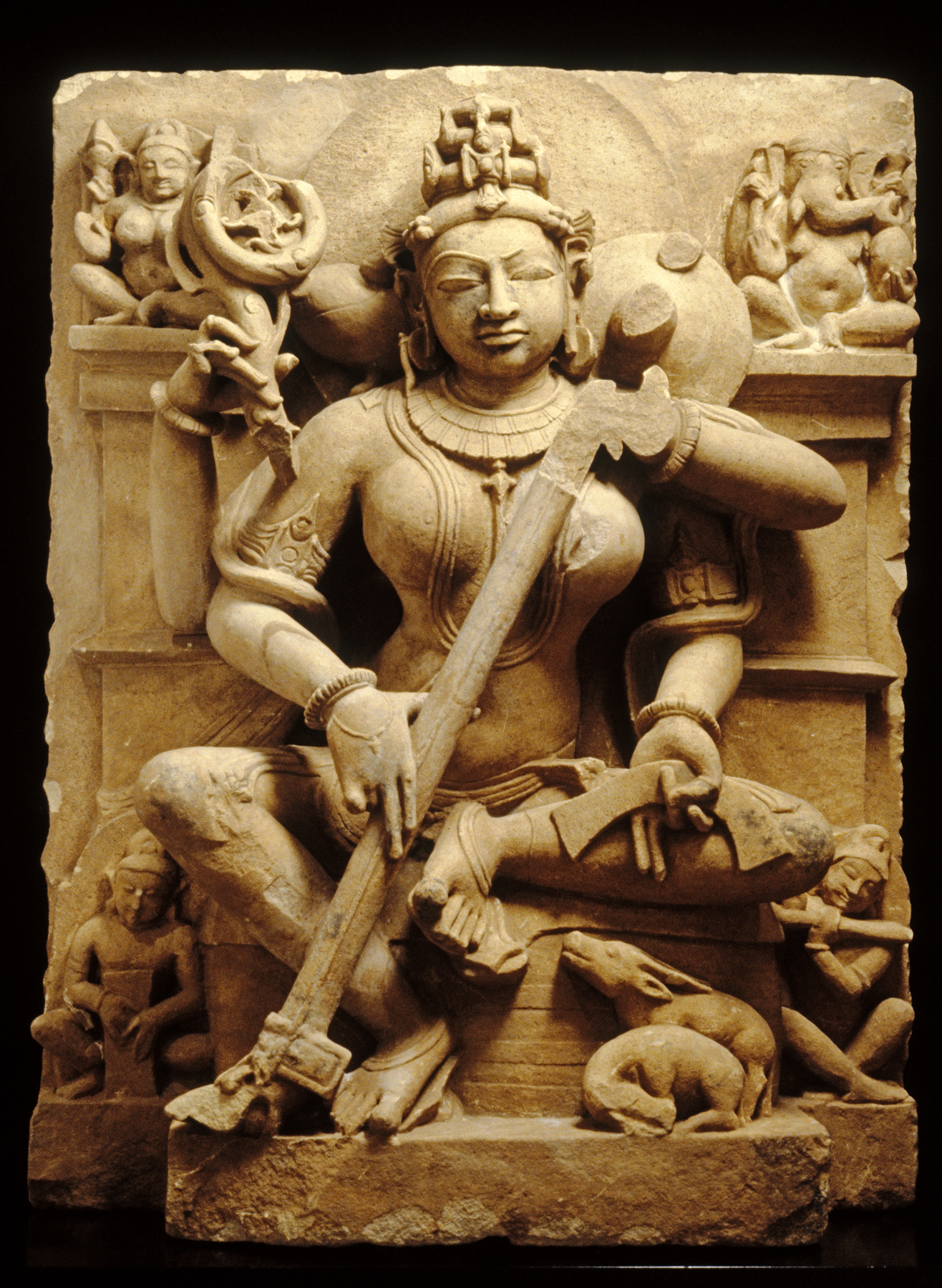Sarasvati
(India, Nepal, and Tibet)
Sarasvati, goddess of music and learning, plucks the "vina"—a stringed musical instrument—while holding a palm leaf manuscript in one of her four hands. The manuscript alludes to sacred knowledge, protected by the goddess. Carved of sandstone native to the northern Indian state of Uttar Pradesh, the sculpture is part of a long history of stone carving in India, used to adorn its temples, forts, and palaces.
Hindus, Jains, and Buddhists worship Sarasvati, having adapted her from earlier traditions which held that all natural objects have a spiritual essence. Taking her name from a river in India (now dry), Sarasvati was an ancient goddess who personified the abundant gifts bestowed by the river—not least to provide water to irrigate the lands. Legends of her generosity extended to her bestowal of knowledge, word, and sound to mankind, especially among later Hindu traditions. All around India, stories of her powers spread.
Although monotheistic (believing only in one god), certain Muslim rulers of India celebrated Sarasvati. The Muslim sultan Ibrahim ‘Adil Shah II (r. 1580–1627), who played the "vina" and prided himself on being a fine poet, identified Sarasvati as his spiritual mother and composed verses in her honor. One verse reads: “Sarasvati is a white jasmine flower. Ibrahim, having put on a garland, bows his head before her and offers prayers.”
Provenance
Provenance (from the French provenir, 'to come from/forth') is the chronology of the ownership, custody, or location of a historical object. Learn more about provenance at the Walters.
Present in Varanasi, India (?); acquired by William Wolff, New York; purchased by Walters Art Museum, 1969.
Exhibitions
| 2015-2016 | Pearls on a String: Artists, Patrons, and Poets at the Great Islamic Courts. The Walters Art Museum, Baltimore; Asian Art Museum, San Francisco. |
Conservation
| Date | Description | Narrative |
|---|---|---|
| Treatment | technical study; cleaned | |
| 10/9/1996 | Loan Consideration | examined for loan |
| 1/1/2004 | Treatment | stabilized; loss compensation |
Geographies
India, Uttar Pradesh (Place of Origin)
Measurements
Sculpture H: 28 1/16 × W: 21 7/8 × D: 9 5/8 in. (71.2 × 55.6 × 24.4 cm); Sculpture with base H: 30 7/8 × W: 23 1/8 × D: 10 1/4 in. (78.4 × 58.7 × 26.1 cm)
Credit Line
Museum purchase, 1969
Accession Number
In libraries, galleries, museums, and archives, an accession number is a unique identifier assigned to each object in the collection.
In libraries, galleries, museums, and archives, an accession number is a unique identifier assigned to each object in the collection.
25.50




